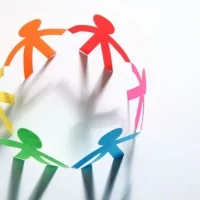Cultural grantmaking serves as a vital mechanism for fostering creativity, preserving heritage, and promoting artistic expression across diverse communities. At its core, this practice involves the allocation of financial resources to support cultural projects, initiatives, and organizations that enrich the social fabric of society. By providing funding to artists, cultural institutions, and community-based programs, grantmaking plays a crucial role in ensuring that cultural narratives are not only preserved but also celebrated and shared.
This financial support can take many forms, from grants for individual artists to larger funding for museums, festivals, and educational programs. The significance of cultural grantmaking extends beyond mere financial assistance; it embodies a commitment to nurturing the arts and culture as essential components of human experience. In an increasingly globalized world, where cultural identities can often be overshadowed by dominant narratives, grantmaking serves as a counterbalance, allowing for the flourishing of diverse voices and perspectives.
As we delve deeper into the various dimensions of cultural grantmaking, it becomes evident that its impact is profound, shaping not only individual lives but also entire communities and societies.
Grassroots Initiatives and Local Impact
Empowering Local Communities
Grassroots initiatives are the driving force behind cultural grantmaking, often emerging from the very communities they aim to serve. These projects are typically driven by local artists and cultural leaders who possess an intimate understanding of their community’s unique needs and aspirations. By focusing on local impact, grassroots initiatives can address specific cultural challenges, whether it be preserving indigenous traditions, promoting local art forms, or providing access to cultural education for underserved populations.
Unlocking Creative Potential
The funding provided through grants enables these initiatives to flourish, creating spaces where creativity can thrive and community members can engage with their cultural heritage. Moreover, the local impact of grassroots initiatives extends beyond the immediate beneficiaries. When communities invest in their own cultural expressions, they foster a sense of pride and ownership that can lead to broader social change.
Catalysts for Social Cohesion and Empowerment
For instance, a community mural project not only beautifies a neighborhood but also serves as a platform for dialogue about local history and identity. Similarly, funding for traditional music programs can revitalize interest in local art forms, encouraging intergenerational knowledge transfer and strengthening community bonds. In this way, grassroots initiatives funded through cultural grantmaking become catalysts for social cohesion and empowerment.
Connecting Cultures through Global Grantmaking
While grassroots initiatives focus on local contexts, global grantmaking seeks to bridge cultural divides by fostering international collaboration and exchange. This approach recognizes that culture is not confined by borders; rather, it is a dynamic tapestry woven from diverse threads of human experience. Global grantmaking initiatives often support cross-cultural projects that encourage dialogue between different communities, facilitating the sharing of ideas, practices, and artistic expressions.
By funding international collaborations, grantmakers can help create a more interconnected world where cultural understanding flourishes. One notable example of global grantmaking is the support for artist residencies that bring together creators from various countries. These residencies provide artists with the opportunity to immerse themselves in new cultures while sharing their own perspectives.
The resulting collaborations often yield innovative works that reflect a fusion of influences, enriching the global arts landscape. Additionally, global grantmaking can play a crucial role in addressing pressing social issues by supporting projects that highlight shared challenges—such as climate change or social justice—through a cultural lens. In this way, global grantmaking not only connects cultures but also fosters a sense of shared responsibility and collective action.
Amplifying Diverse Voices and Perspectives
One of the most significant contributions of cultural grantmaking is its ability to amplify diverse voices and perspectives that might otherwise go unheard. Historically marginalized communities often face barriers to accessing funding and resources necessary for their artistic expression. Cultural grantmaking seeks to rectify this imbalance by prioritizing support for underrepresented groups, including artists of color, LGBTQ+ creators, and those from low-income backgrounds.
By intentionally directing resources toward these communities, grantmakers can help ensure that a wider array of narratives is represented in the cultural landscape. The amplification of diverse voices not only enriches the arts but also fosters greater empathy and understanding among audiences. When individuals are exposed to stories and experiences different from their own, it challenges preconceived notions and encourages critical reflection.
For instance, funding for theater productions that explore the experiences of immigrant communities can spark important conversations about identity and belonging. Similarly, visual art exhibitions showcasing the work of indigenous artists can educate viewers about historical injustices while celebrating resilience and creativity. In this way, cultural grantmaking serves as a powerful tool for social change by promoting inclusivity and representation in the arts.
Challenges and Opportunities in Cultural Grantmaking
Despite its many benefits, cultural grantmaking is not without its challenges. One significant hurdle is the often limited availability of funding sources. Many grantmakers operate within strict budget constraints, which can lead to highly competitive application processes where only a fraction of deserving projects receive support.
This scarcity can disproportionately affect smaller organizations or individual artists who may lack the resources or expertise to navigate complex grant applications. Consequently, some innovative projects may go unfunded simply due to a lack of visibility or access to information about available grants. However, these challenges also present opportunities for innovation within the field of cultural grantmaking.
As organizations recognize the need for more equitable funding practices, there is a growing movement toward simplifying application processes and providing capacity-building support for underrepresented groups. Additionally, technology has opened new avenues for grantmakers to connect with potential applicants through online platforms and social media. By leveraging these tools, grantmakers can reach a broader audience and ensure that diverse voices are included in the funding conversation.
Ultimately, addressing these challenges head-on can lead to more inclusive and impactful cultural grantmaking practices.
The Future of Cultural Grantmaking: Trends and Innovations
As we look toward the future of cultural grantmaking, several trends and innovations are emerging that promise to reshape the landscape. One notable trend is the increasing emphasis on collaboration among grantmakers, artists, and community organizations. By working together more closely, stakeholders can pool resources and expertise to create more impactful projects that resonate with local communities.
Collaborative models not only enhance the effectiveness of funding but also foster a sense of shared ownership among all participants. Another significant innovation is the integration of technology into the grantmaking process. Digital platforms are being utilized to streamline application submissions, facilitate communication between grantmakers and applicants, and even provide virtual spaces for showcasing funded projects.
This shift toward digital engagement allows for greater transparency in the funding process while also expanding access for artists who may have previously faced barriers due to geographic or economic constraints. In conclusion, cultural grantmaking stands at a pivotal moment in its evolution. By embracing collaboration, leveraging technology, and prioritizing inclusivity, stakeholders can ensure that the arts continue to thrive as a vital component of our shared human experience.
As we navigate an increasingly complex world, the role of cultural grantmaking in fostering creativity, connection, and understanding will undoubtedly remain essential for generations to come.
For those interested in the impact of cultural grantmaking on global communities, a related article worth exploring is about Grants to Build Sustainable and Inclusive Peace: Strengthening Trust and Social Cohesion in Moldova. This article discusses a funding opportunity aimed at enhancing peace and social cohesion through cultural and community activities in Moldova. It highlights how targeted financial support can empower local groups to foster a more harmonious society, which aligns with the themes of amplifying diverse voices and promoting cultural understanding as discussed in “Grassroots to Global: How Cultural Grantmaking Amplifies Voices from around the World.”








































